
Having recently joined one of the local photography clubs, South Coast Camera Club, I decided that the upcoming club outing to Yorke Peninsula would be a great opportunity to get to know a few of the members and to visit the Yorke Peninsula for the first time. Since it was a club event, we decided that I would go solo, a first in our newly acquired caravan.
Departure
After preparing the caravan and packing as much as possible on Thursday 30 May, I managed a quick getaway for the almost 400 km drive the next morning. My only experience of driving through Adelaide was on the return journey from our 2021 road trip – I still have memories of what seemed to be driving round in eternal circles before we broke free of the city. Because of this, I decided to take a route through the Adelaide Hills – a decision that I regretted. The endless hills did nothing for my stress levels and the wagon’s fuel consumption, bearing in mind I was towing a heavy caravan.
I arrived at Marion Bay Caravan Park at the southern tip of the peninsula by mid-afternoon in time to set up and catch up with my fellow members for a briefing in the camp kitchen at 5 o’clock (accompanied by drinks and nibbles, of course). The group comprised a total of 12 members and their partners camping plus another three from the local camera club, Southern Yorke Peninsula Photography Club, making it a potentially inspiring mix of interests.
After dinner in the camp kitchen, I walked along the foreshore to the end of the Marion Bay jetty where I managed to find a reasonable shot of the milky way. It turned out to be a very cold night, so much so, that I hardly sleep until about 3 o’clock when I braved the low temperature to get out of bed to don a further two layers.
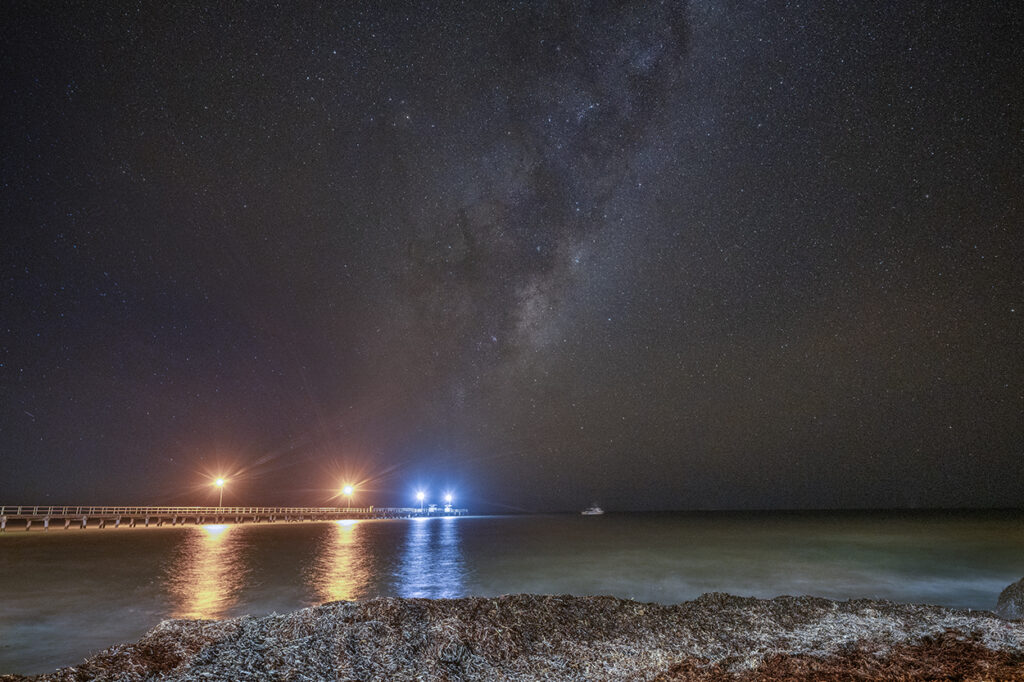
Saturday
The day was spent in the Dhilba Guuranda Innes National Park. Setting off in a convoy of vehicles, our first stop was Stenhouse Bay Jetty. A small group, that I elected not to join, had earlier visited here for a rather disappointing sunrise.
This was my first introduction to the history of the area which was predominantly focused around the mining of gypsum, the primary component of plaster and cement. Stenhouse Bay was operated as a port for the shipping of gypsum from 1922 until its closure in 1972. The evidence of mining and transportation was everywhere to be seen, complemented by comprehensive information boards.
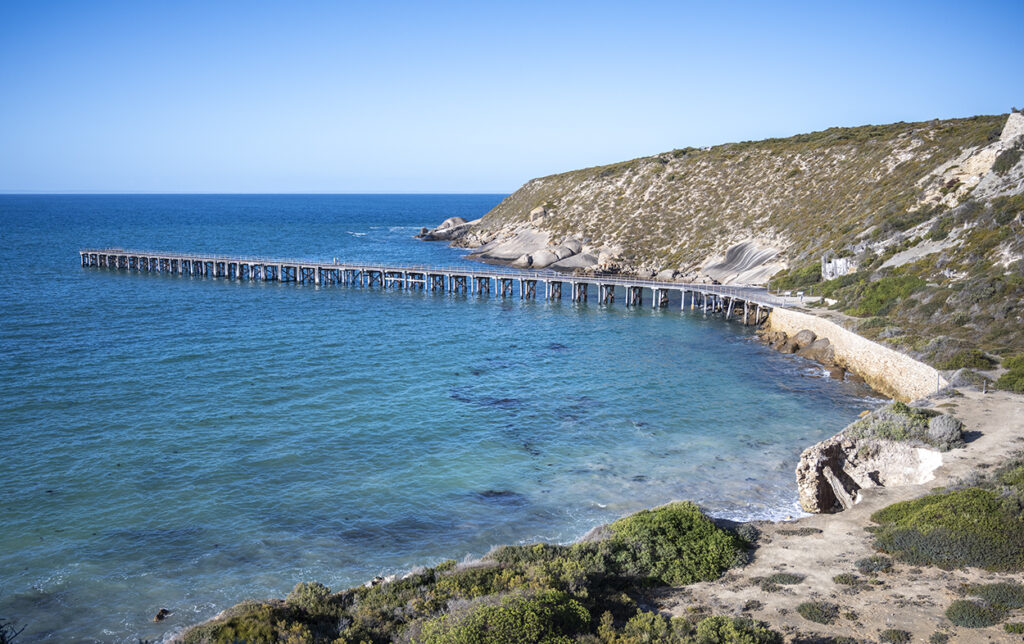
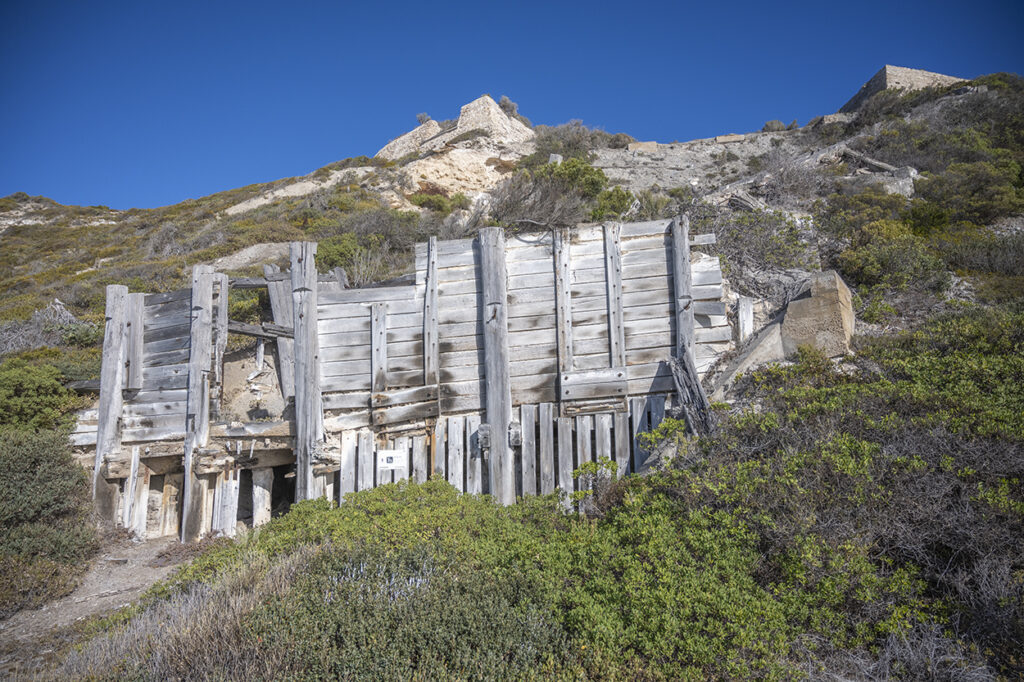
From there we had a brief stop at Narungga Lookout from where we had extensive views along the coast and to Chinamans Hat Island.
Cape Spencer Lighthouse was the next stop. This again gave us great views along the coastline with opportunities for all genres of photography (buildings, landscapes & birds). Of course, my interest lay primarily in trying to take shots of the lighthouse from various interesting angles.
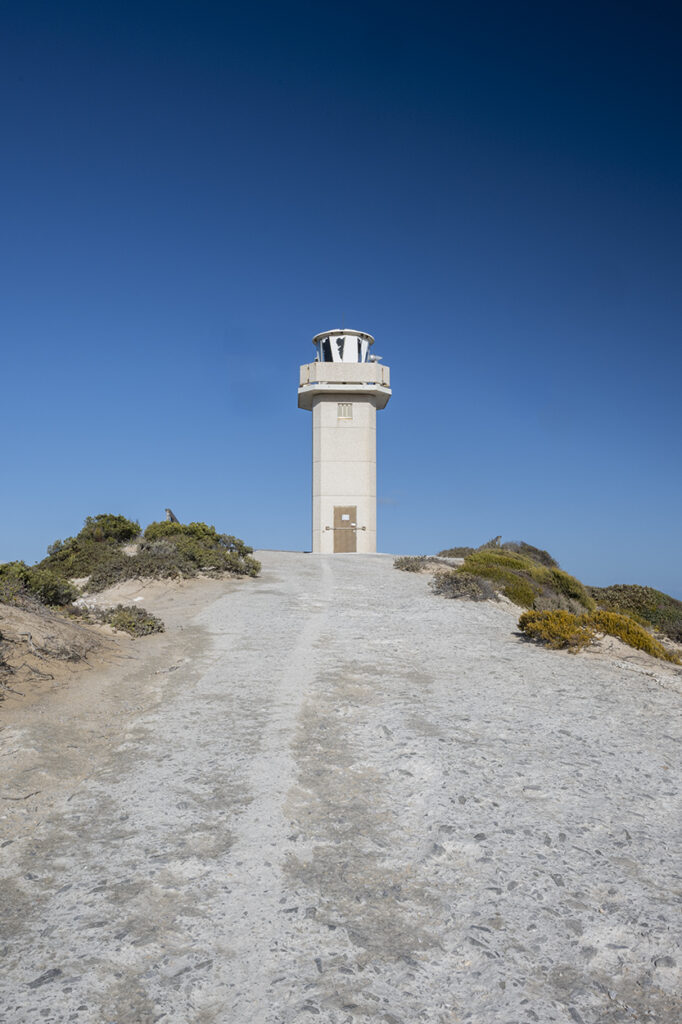
From there we had a brief stop at Narungga Lookout from where we had extensive views along the coast and to Chinamans Hat Island.
Cape Spencer Lighthouse was the next stop. This again gave us great views along the coastline with opportunities for all genres of photography (buildings, landscapes & birds). Of course, my interest lay primarily in trying to take shots of the lighthouse from various interesting angles.
Continuing the theme of gypsum, we visited the heritage village of Inneston. This deserted village was once at the heart of the gypsum mining industry, leaving behind relics of buildings and machinery. Actually, it was not entirely deserted as a few of the old buildings had been restored and let out as holiday accommodation
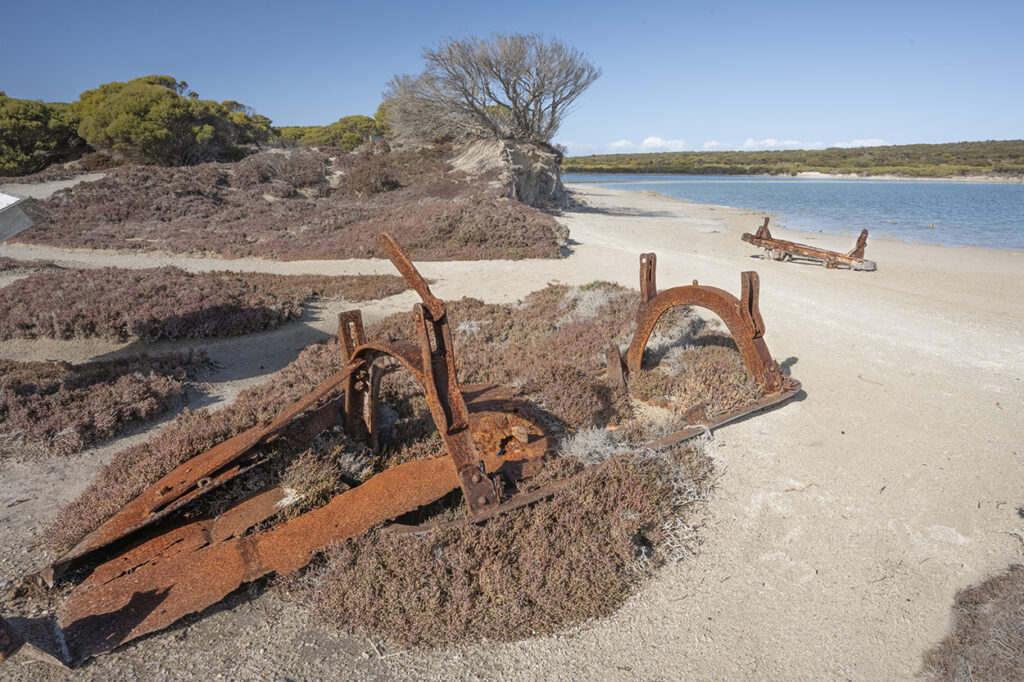
Our next planned visit to the Ethel wreck interested me. This ship had washed ashore during a storm and its remains continue to be embedded in the sand. Depending on the tides and sand movement, the wreck can either be totally visible or totally under the sand. When we arrived only the top of the ribbed ship’s frame was visible, so I felt it was not worth the long climb down to photograph it.
Packed lunch was at West Cape where we had magnificent 360 degree views and were able to have a post lunch walk to the stainless steel lighthouse. Built in 1980, this was the first light to shine from this location to help guide ships safely into the Spencer Gulf..
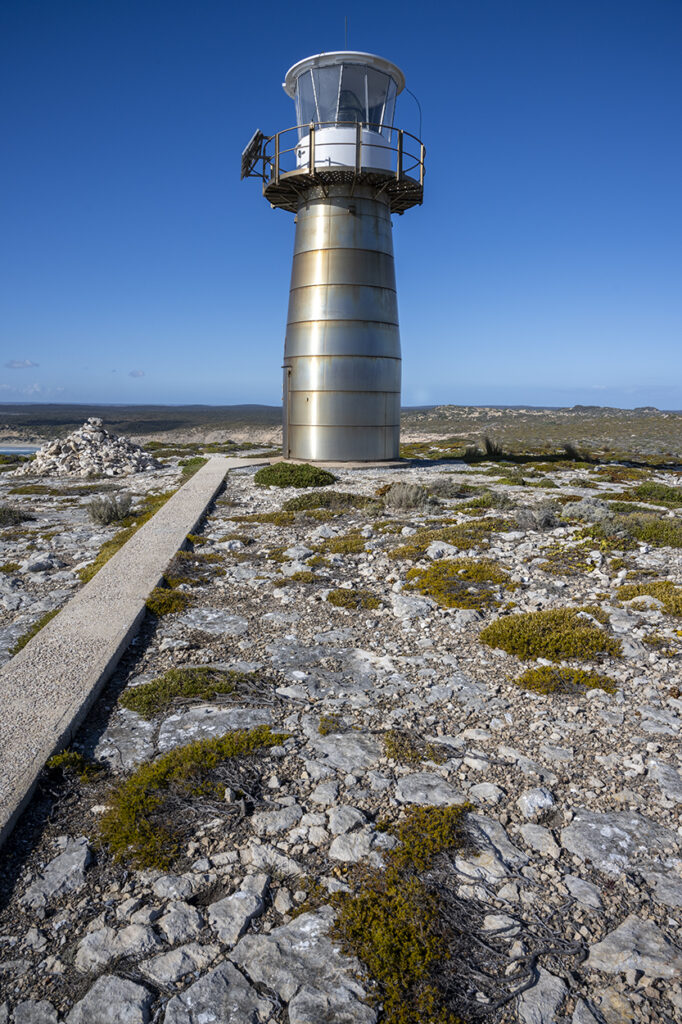
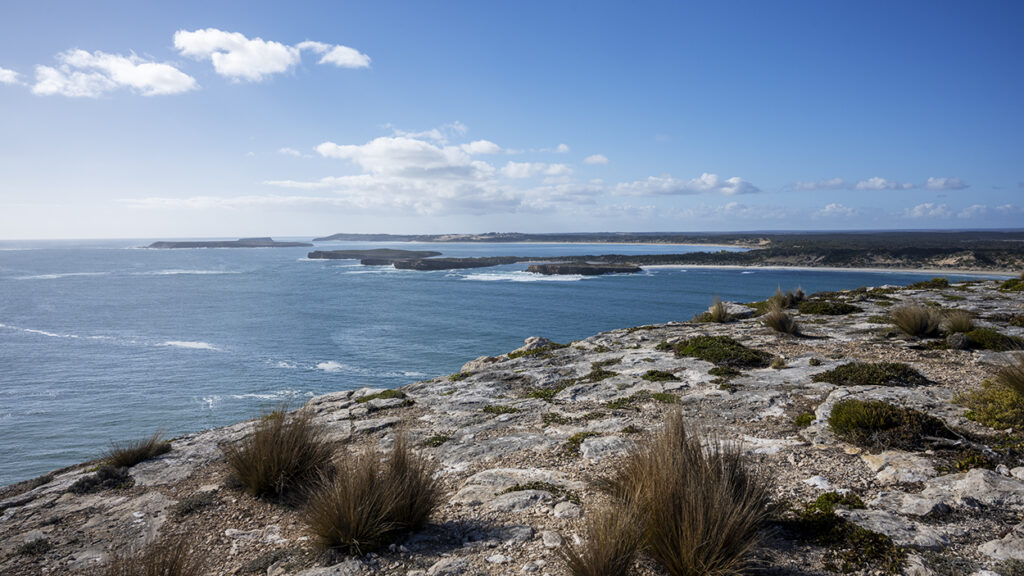
Sunday
It was with some excitement that four of the group that set off for the pink lakes, near Yorketown. These four were all drone operators who had not been able to fly in the National Park. Added to this was the prospect of the intricate patterns and vibrant colours that pink lakes usually present when covered with a layer of water and some sunshine. At the beginning of the week, the lakes had been dry. However, with some rain in the intervening period, there was some hope that they had, at least, partially filled up. We were not disappointed.
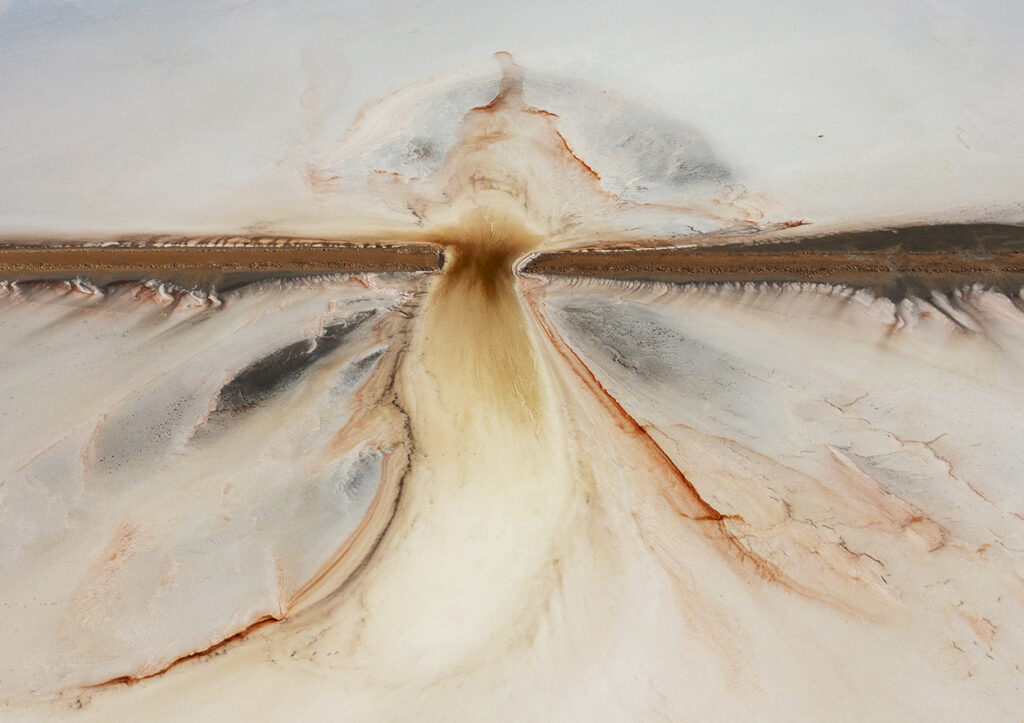
The morning was spent at three of the many lakes before stopping at the east end of Lake Fowler – a designated picnic area, strangely without any picnic tables.
Our afternoon destination was Troubridge Hill Lighthouse. This is a fascination structure, constructed in 1980 from wedge shaped bricks, specifically fired the purpose. It was designed to withstand earthquakes and high winds. Replacing the original Troubridge Shoal Lighthouse, it has a commanding position to protect this treacherous coastline which by 1911 had claimed nineteen ships.
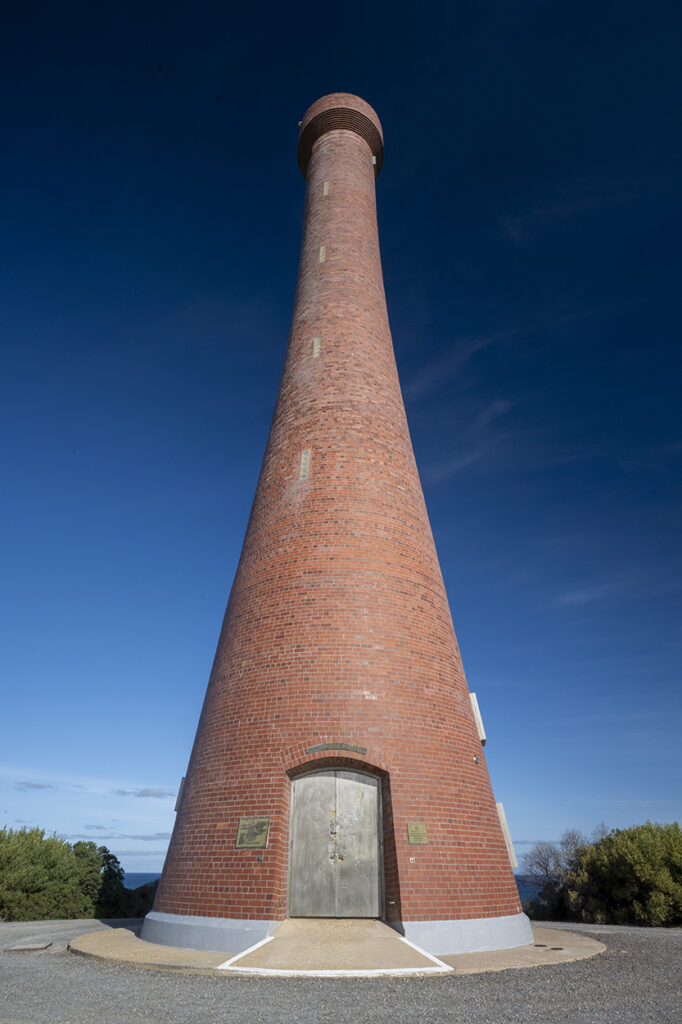
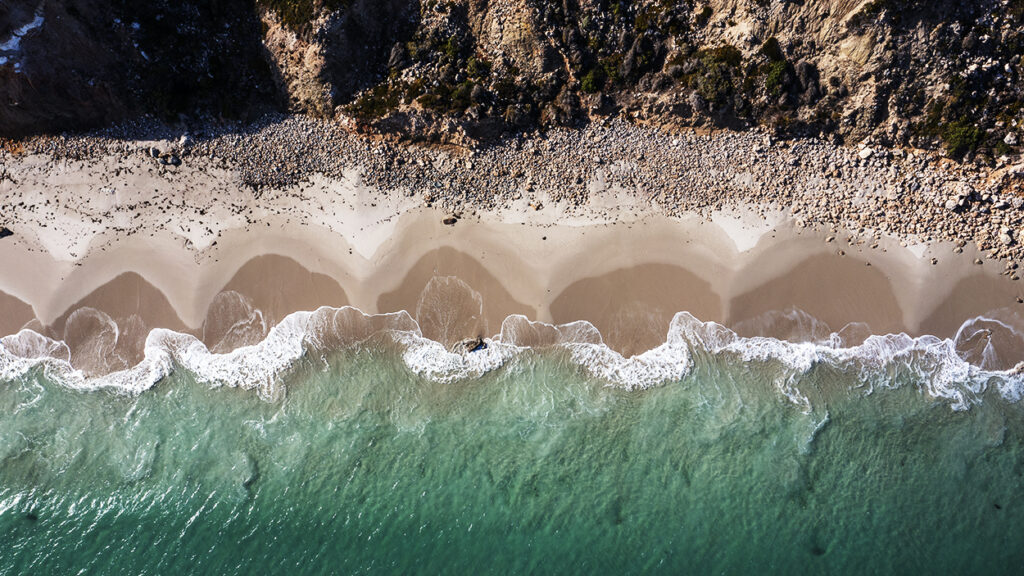
Faced with a bit of a drive back to Marion Bay, we unanimously agreed to head back where we later met up for our afternoon refreshments. By this time, our group had become somewhat depleted due to five members and partners having to return for various Monday commitments.
Monday
During the weekend we had been blessed with some sunny and warm weather. Unfortunately, this changed on Monday when it was time to wear big jackets to ward off the strong winds we experienced at the various stopping locations. Our main destination was Corny Point, with stops at Daly Head, Berry Bay and Corny Point Lighthouse. These locations were great for the bird photographers in our now depleted group.
Highlights for me were some of the rock formations and the pod of at least 20 dolphins that swam up and down the waves in front of us at Berry Bay.
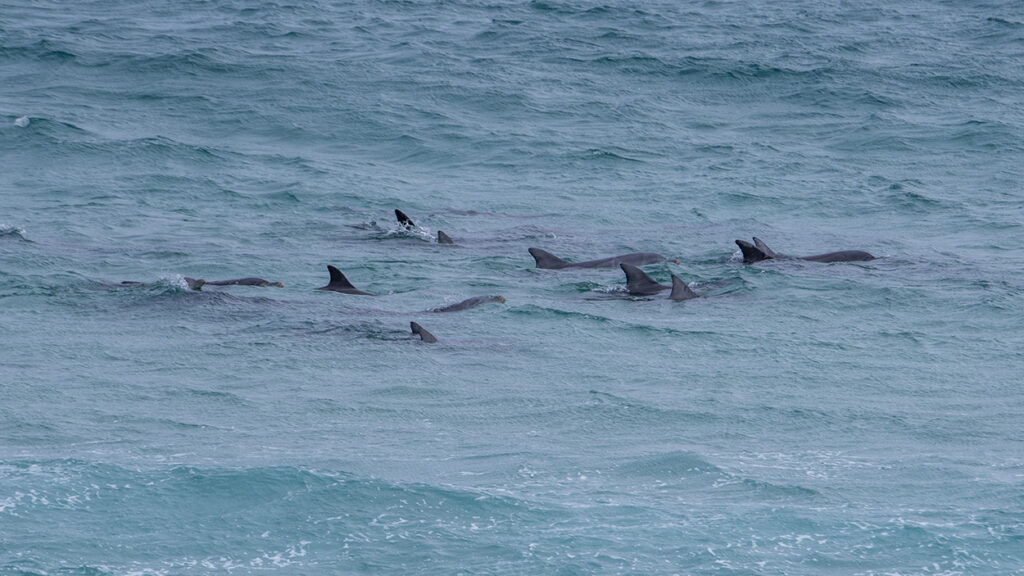
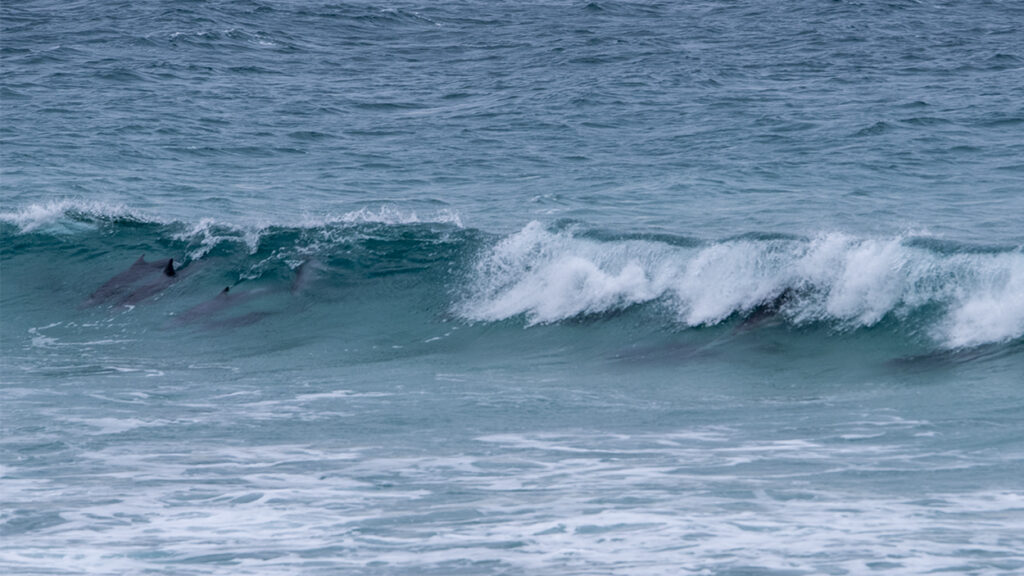
The finale for the day was a fish and chips lunch at Corny Point café. While the rest of the group were heading to the Marion Bay jetty, I was keen to visit the beach Chinamans Hat Island in the national park. The resulting photographs were less than satisfactory, but the walk along the beach more than compensated.

Since rain was forecasted for Tuesday, I packed up as much as I could on Monday evening after another dinner in the camp kitchen.
Returning Home
It rained overnight, but thankfully by day break it had faired up. This meant that I could have my outside breakfast as usual. I wasn’t planning to leave until after 9 o’clock, but having had a night of disrupted sleep and being wide awake at 6 o’clock, I was on the road by 08:30.
Due to the tortuous journey on Friday, I decided to drive through Adelaide. It was so easy that my phobia of driving through the city has been fully remedied. In future, any destinations north of the city will be so much easier. However, the journey back was made less enjoyable because of the intermittent light rain.
I left cleaning the wagon and caravan to the next day, the latter now securely housed in the shed, the access to which is now relatively straightforward after all the work to the gate and shed door.
I had always been a bit wary of joining a photographic excursion group, being concerned about others getting in my way and being held to strict location timings. However, this outing made me realise that other photographers are very courteous about not ‘getting in the shot’, after all it is a two-way street. Also, there was a lot of flexibility in the timing. In view of this, I would happily join and look forward to another such outing.
